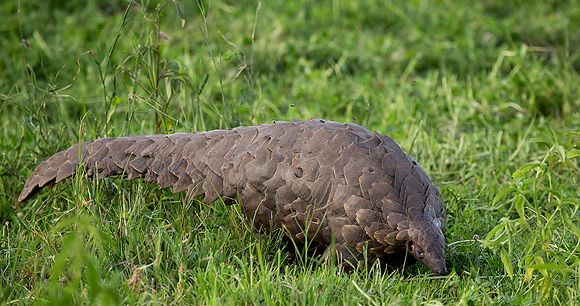
As a resource for food and medicine, wildlife has long been a commodity in commerce. Humans hunt, trap and fish for animals to sell as food and medicine.
Subsistence use of wild animals for food has been practiced for millennia, most often (though not always) without upsetting the balance of nature. When animals are traded commercially for food and medicine however, overexploitation can quickly plunge ecosystems into disarray. In today’s global society, the line between subsistence and commercial hunting is becoming increasingly blurred—all the more so due to rising human population and consumer demand, political instability, economic collapse, and a lack of proper law enforcement.
The commercial hunting of wild terrestrial animals is illegal in most countries, yet with poor policing and weak penalties, it continues to flourish. As “bushmeat” hunters profit, the funds finance additional supplies such as guns, ammunition, snares and flashlights, thereby increasing killing efficiency and escalating the pace of wildlife loss. From rodents to elephants, few species have been unaffected by the illegal bushmeat trade. Though perceived to be a problem only in West and Central Africa, the illegal bushmeat trade thrives in South America, Southeast Asia, and many other places around the world.
In the Emerald Triangle—the border region of Laos, Thailand and Cambodia—boar, guar and deer species are routinely killed and sold to tourists and locals as exotic delicacies. In Cambodia, soldiers responsible for patrolling the border have been implicated in hunting wild animals to sell their meat. Increasing wealth in China has added to the demand for wild animal meat at restaurants and in homes. Turtles, cobras and other poisonous snakes, pangolins and civet cats are all popular. In 2001, an estimated 20 tons of snakes and 20,000 birds were consumed every day by diners eating at restaurants in a single city—Guandong, in southern China. By 2004, cobra populations had declined by 90 percent, while populations of common rat snakes had been reduced by 75 percent. As China’s wildlife populations diminish, the demand is being met by an increase in the killing and import of bushmeat from India, Thailand, Malaysia, Indonesia and Vietnam.
Bushmeat is sold in trendy restaurants and specialized markets in many of the world’s largest cities—including cities in the US, where an estimated 15,000 pounds of bushmeat is illegally imported and sold each year. Only about 1% of illegally imported bushmeat is detected and seized, according to wildlife inspectors at US airports.
Animals are also commercially exploited for the perceived health benefits derived from consuming their parts. Wild tigers, already driven to the brink of extinction by habitat loss, are heavily targeted for this reason. To those who ingest them, ground tiger bones, dried organs, and other parts are believed to impart strength, virility and other curative powers, and the illicit tiger parts trade flourishes despite a global commercial ban. Similarly, rhino populations are being devastated by poaching and uncontrolled hunting for trophies and horns as a traditional medicine ingredient.
Perhaps the saddest victims of this trade for medicinal ingredients are the world’s bears, whose parts are considered to have curative powers. Valued for their bile as well as body parts, Asiatic black bears are hunted and farmed by the tens of thousands. Once captured, bears are confined for life - often in cages barely larger than the bear’s body—and subjected to regular “bile milking” via catheters surgically implanted into their gall bladders. For centuries, bear gallbladders and bile have been prescribed as an ingredient in traditional medicine in Asia to treat a variety of human ailments. When the bears become too old to produce bile effectively, they are usually killed and their gallbladders removed and paws lopped off. Bear paw soup is an Asian culinary delicacy for which restaurant patrons pay significant sums.